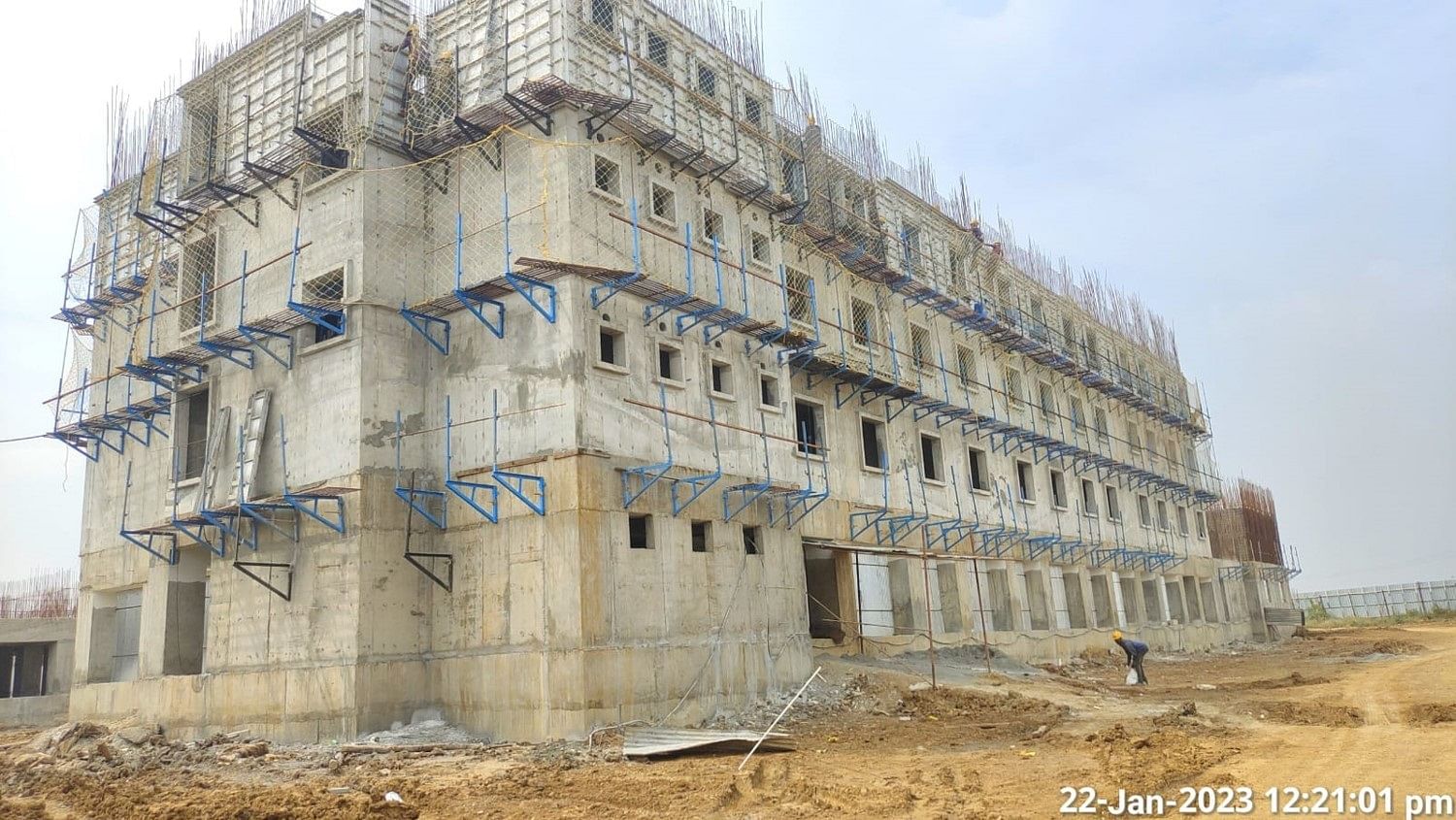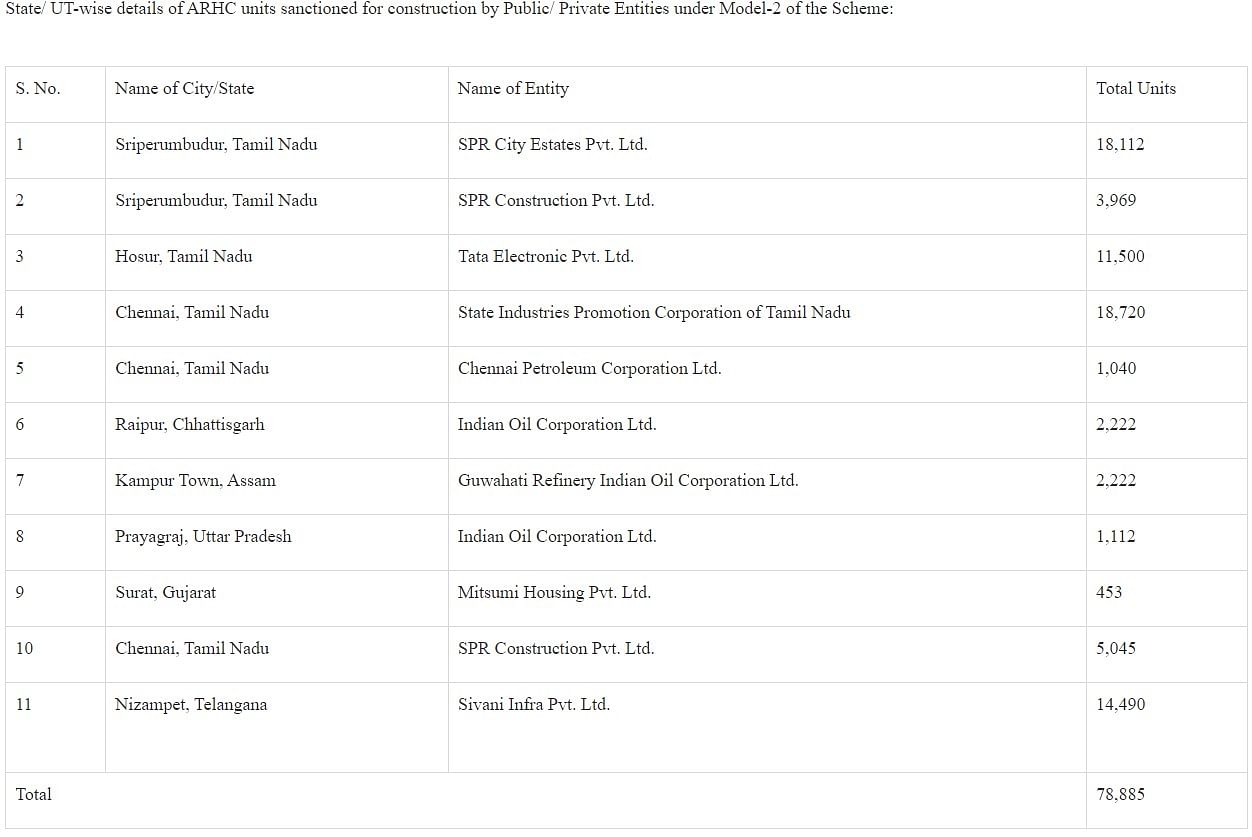The scheme will primarily address the need of affordable housing and provide shelter facilities to the socially and economically vulnerable population groups.
Construction of 18,720 integrated dormitory facilities is progressing at a fast pace in State Industries Promotion Corporation of Tamil Nadu (SIPCOT) Industrial Park, Vallam Vadagal at Sriperumbudur, Tamil Nadu.
The housing complex is being executed under Affordable Rental Housing Complexes (ARHC), introduced as a sub-scheme of Pradhan Mantri Awas Yojana-Urban (PMAY-U).
Five major rental housing projects under the scheme were sanctioned in Tamil Nadu, involving the development through public and private organisations in Chennai, Sriperumbudur and Hosur. These projects are the first of their kind, in the state.
It is planned to have 45,841 housing units and dormitories, primarily to meet the housing needs of migrant workers and the urban poor.
The ARHC is formulated to be implemented through two models.
Under Model 1, the government is going to utilise existing government-funded vacant houses to be converted and utilised for rental housing to cater to the shelter needs in urban areas.
In Model 2, the construction and operations of affordable rental housing complexes will be executed by public and private entities on their own available vacant lands.
The development of the residential complex in SIPCOT industrial park is being executed under Model 2 of the scheme.


Under the scheme, the agencies developing the units and dormitories have implemented measures to safeguard the housing rights of the designated population.
This development ensures provisions for basic amenities required for decent living conditions. The operational tenure has been intended for a minimum of 25 years.
The scheme also provides guidelines with specific details of the developed units. The complex will have single bedroom and double bedroom units, of sizes 30 sq-m and 60 sq-m, respectively.
The dormitories to be developed should have halls to accommodate four to six beds.

Need For Regulated Rental Housing
Considering the demand for quality housing resources in Indian cities, this proposed infrastructure will make significant contribution to the housing industry.
It will primarily address the need of affordable housing and provide shelter facilities to the socially and economically vulnerable population groups.
Additionally, the scheme has created opportunities for discussions on the rental housing market by inviting stakeholders to collaborate and determine the most effective method for successful implementation of the scheme.
The scheme, focused on developing economically weaker sections (EWS) and lower income groups (LIG) housing infrastructure, would provide housing resources for urban migrants from hospitality sectors, health institutions, industrial workers and more.
The growing rural to urban migration includes a significant number of low-income populations coming to the cities, in search of better work and living opportunities.
The 2011 census reports that the 51 million migrants moving within India constitute about 10 per cent of the country’s labour force.
The need for housing, for these migrants, remains a pressing issue due to the lack of adequate, affordable housing and regulated rental options. This also remains a challenge due to the high demand and land value in the cities.
As a result, these populations often reside in informal settlements, such as slums and makeshift housing, and face ongoing challenges, including illegal occupancy, encroachments and inadequate civic amenities.
The existing rental economy for the low-income migrant tenants in cities largely run on informal agreements with no security of tenure and basic facilities.
Looking at the 2011 National Sample Survey, 25 per cent of the urban population rent homes. Of this total, only 5 per cent are formal and 20 per cent are informal.
The housing opportunity, through the scheme, will help the workforce, providing them adequate living conditions and security of tenure. The proposed infrastructure will be managed and regulated by the private and public agencies in charge. This includes maintaining the structure, surroundings and the infrastructure of the complexes.
This segment of housing infrastructure through the PMAY, once successful can further channelise the resources and methodology required for improving rental public housing and reduce the largely growing issues of informal settlements in Indian Cities.


